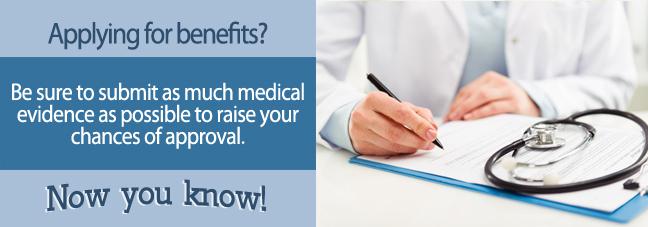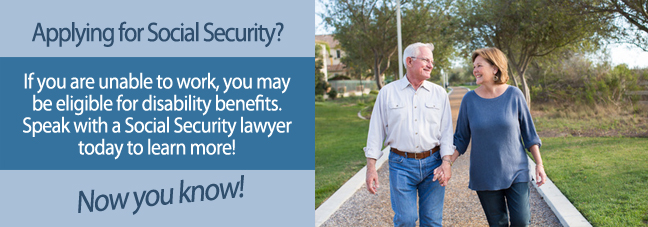The Centers for Disease Control (CDC) estimate that over 5 million people are currently living with heart failure. Unlike it's name suggests, heart failure doesn't mean the heart has stopped working completely. It's a chronic condition that happens when your heart can't pump enough blood to fully oxygenate the body.
There are many symptoms that may make you or a loved one affected with heart failure unable to work. If you're diagnosed with the illness, the Social Security Administration (SSA) may be able to help you support yourself with one of its disability benefit programs.
What Is Heart Failure?
Heart failure is a chronic condition that is also referred to as Congestive Heart Failure. Given its chronic nature, heart failure is a serious condition that tends to get progressively worse over time. And, while it is rare, heart failure can develop more abruptly. Given its gravity, heart failure is a condition that necessitates routine monitoring and medical treatment.
But, exactly what is heart failure? Heart failure is a type of heart disease that happens when the heart stiffens and, thereby, inhibits the heart muscle from being able to adequately pump blood throughout the body. Given that the heart’s ability to properly pump blood throughout the body is a major cornerstone in our body system’s overall health and ability to function well, it is serious and can be dangerous when our heart is no longer able to do this. As such, heart failure is a serious condition that can impact people’s ability to function and participate in normal day-to-day activities. Furthermore, heart failure can affect one’s working ability. If you have heart failure, and you are no longer able to work as a result of your heart failure, then you may be able to get Social Security disability for heart failure.

Is Heart Failure A Disability?
Given that heart failure happens when your heart is not able to pump the adequate amount of blood needed by the rest of your body to your body, heart failure can directly impact your ability to participate in daily activities. This is because a failing heart tends to result in blood becoming backed up in the body which can ultimately cause weakness, fluid build-up, and lethargy among other symptoms as well. Additionally, given the fact that heart failure does not have a cure, this condition can be somewhat challenging to treat. Therefore, people with heart failure may likely need to readjust their lives and activities such as work in order to cope with the condition. So, again, if you are no longer able to work as a result of your heart failure, you could be able to get disability for heart failure.
So, is heart failure a disability? Heart failure can be considered a disability if it causes someone to no longer be able to continue working. In other words, you could get disability for heart failure if you have been diagnosed with this condition and it has inhibited your ability to continue working. The Social Security Administration (SSA) is the agency that oversees both the Social Security Disability Insurance (SSDI) and Supplemental Security Income (SSI) disability benefits programs. As such, the SSA is the one that reviews all applications for Social Security disability benefits. In order for the SSA to evaluate disability applicants’ eligibility for these benefits, they utilize a comprehensive manual that lists all the medical conditions and strict definitions of symptoms that they see as disabling and thereby deems applicants who meet these criteria to be eligible to receive disability benefits. Said differently, this manual essentially lists the medical impairments and conditions that the SSA deems as being severe enough to possibly prevent someone from being able to work. This manual is referred to as the Blue Book.
The answer to the question—is heart failure a disability?—boils down to meeting this condition’s criteria listed in the SSA’s Blue Book. The Blue Book is broken up into sections, and heart failure is listed under Section 4.00 – Cardiovascular System. More specifically, heart failure is listed under section 4.02 in the SSA’s Blue Book.
The Financial Costs of Heart Failure
The cost of heart failure in the United States is extremely high at almost 40 billion dollars each year, a study on heart failure in the United States and Europe published in EP Europace reports. This includes all expenses in healthcare and missed work. Individually, the conditions costs those suffering from the conditions an additional $8,500 each year.
Another study in Clinical Cardiology found that average costs of hospitalizations range from $8,000 to over $25,000 for each episode depending on the type of heart failure you experience. Heart failure may cause other conditions, which increase the costs of treatment.
Though the inpatient visits are costly, there are many other heart failure-related expenses that will run up your bills. The condition often needs frequent outpatient visits, which require you to take more time off work. Additionally, to manage the disease many patients need medication and/or medical devices.
Medically Qualifying for Benefits with the Blue Book
When the SSA receives an application for disability benefits, it uses the Blue Book to medically evaluate the claim. The Blue Book is the SSA's official list of hundreds of impairments that qualify for disability benefits.
Heart Failure can be found in section 4.02—Cardiovascular System.
To qualify with the Blue Book, the SSA requires medical evidence of chronic heart failure while on prescribed treatment that shows either:

- Systolic heart failure, which is the inability of the heart to contract normally and expel enough blood. The dilated, poorly contracting left ventricle should be larger than 6 centimeters or have an ejection fraction (the percentage of blood in the ventricle that is pumped out) of 30 percent or less not during an episode of acute heart failure (a period of stability).
- Diastolic failure, which is when the heart is unable to relax and fill normally and the muscle in the left ventricle thickens to compensate. Together, the left ventricular back wall and septum must be 2.5 centimeters or more, and the left atrium must be enlarged to 4.5 centimeters or more with normal or elevated ejection fraction during a period of stability.
- Persistent symptoms of heart failure which very seriously limit the ability to independently initiate, sustain, or complete activities of daily living in an individual for whom a medical certificate, preferably one experienced in the care of patients with cardiovascular disease, has determined that an exercise test would present a significant risk to the individual.
- Three or more separate episodes of acute congestive heart failure within a consecutive 12-month period with evidence of fluid retention, requiring acute extended physician intervention such as hospitalization or emergency room treatment for 12 hours or more, separated by periods of stabilization.
- Inability to perform on an exercise tolerance test at a workload equivalent to 5 METs or less due to dyspnea, fatigue, palpitations, and/or chest discomfort; three or more consecutive premature ventricular contractions, or at least 6 premature ventricular contractions per minute; a decrease in systolic pressure (blood pressure when the heart is contracting) during an increase in workload due to left ventricular dysfunction; or signs the brain isn't being fully oxygenated, like abnormal gait or mental confusion.
If you are experiencing any of these signs or symptoms, talk to your doctor to see if you qualify for social security disability.
Qualifying Without Meeting a Medical Listing
If you don't qualify for disability benefits with the Blue Book, there is another way to be approved. The SSA will also consider a medical-vocational allowance by determining your Residual Functioning Capacity (RFC). Like Blue Book approval, you must be expected to be out of work for at least 12 months.
The SSA figures out RFCs by measuring your age, education, and work history with your reported limitations. The SSA will put you into one of five ability categories—sedentary, light, medium, heavy, and very heavy. If the SSA can't reasonably find a job that you can do with your education and skills that meets their Substantial Gainful Activity (SGA) minimum, which, in 2025, is $1,620 per month for non-blind individuals and $2,700 per month for individuals who are blind, you may be approved.
The symptoms of heart failure, like shortness of breath, fatigue, swelling in lower extremities due to fluid retention, and inability to perform physical activity, confusion, and impaired brain function, can make normal movement and activities difficult
Older adults who don't have a history of light work or a college degree are more likely to be approved through and RFC than adults that do. For example, those in physically demanding jobs, like construction workers, movers, firefighters, policemen, and retail are more likely to be approved than someone who works in an office.

How to Apply for Social Security Disability Benefits
If you've been diagnosed with chronic heart failure and it negatively affects your body to the extent that you can't work, talk to your doctor about your likelihood of being approved for disability benefits. Whether applying under the Blue Book or an RFC, make sure not to wait to apply. Many claims can take months or years to be approved. Because of the amount of stress the process and time can cause, apply only if you and your doctor think your chances of approval are high.
If you do meet an SSA listing, you may be approved in the initial claim stage. To ensure your claim gets answer as quickly as possible, you need to submit all of the necessary medical information with the initial application. As many as 70 percent of claimants are denied because they are missing medical evidence to support their claim.
Important medical evidence for heart failure will include:
- Your ejection fraction, which can be identified by many of the tests below
- Physical examination that includes taking your weight and heart pressure and listening to your heart and lungs.
- Blood tests that measure levels of electrolytes, albumin (a type of protein), creatinine (chemical waste normally filtered out by kidneys) and more.
- Chest X-Rays and other medical imaging to allow doctors to view the heart and lungs
- Electrocardiogram (EKG or ECG), which records your heart's rhythm, frequency of beats and electrical conduction
- Echocardiography (Echo) to examine the heart's structure and movements
- Exercise stress test to determine changes in blood flow
- Radionuclide Ventriculography or Multiple-Gated Acquisition Scanning (abbreviated as MUGA) to show abilities and/or damages inside the heart
- Cardiac catheterization to show if any arteries are blocked
- History, length, and outcomes of all prescribed treatments
- Summaries of hospitalizations, operative reports, and any other related documents
- Detailed reports from your primary care doctor describing the severity of your heart failure and the resulting physical limitations
When preparing your application for benefits, make sure to check out the SSA's website, where they have a list of everything you need to include in your application. If you're applying for Social Security Disability Insurance (SSDI) you can apply online or at your local SSA office. If you're applying for Supplementary Security Income, you must go to an SSA office and apply in person.
Before you submit the claim, double check that all the questions are answered and all the information is correct. Mistakes can cause your application to be delayed or denied. If your are hospitalized while awaiting an answer or there are any other changes or new tests done, make sure to inform the SSA immediately. The new information may help your claim get approved.
If you’re approved for benefits, your spouse and children may also be eligible for benefits. To learn more about the different forms about disability benefits, visit our pages on Social Security Disability Insurance and Supplemental Security Income.
For additional information, read our article on tips for success when applying for disability benefits with heart failure.